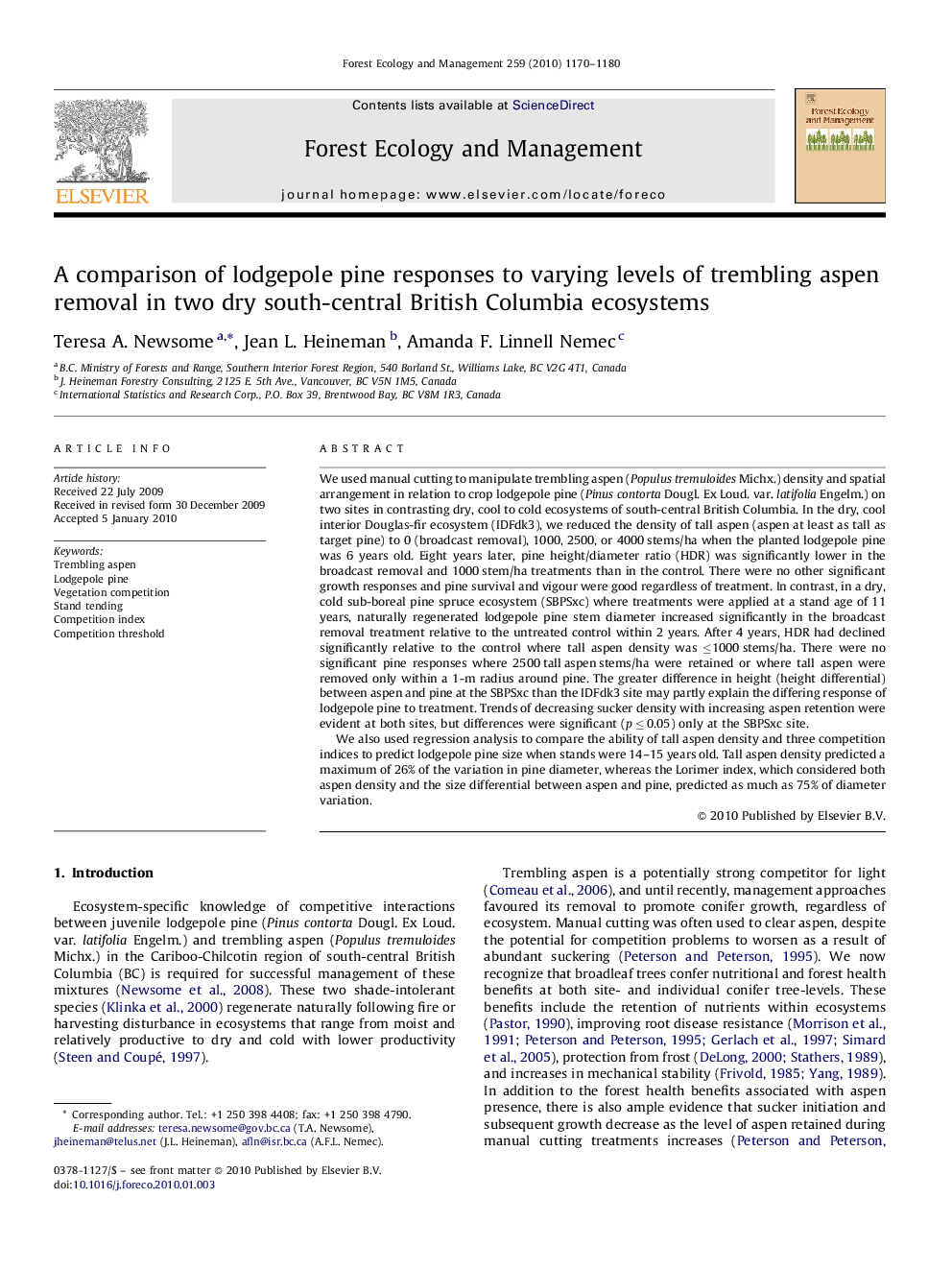| کد مقاله | کد نشریه | سال انتشار | مقاله انگلیسی | نسخه تمام متن |
|---|---|---|---|---|
| 88753 | 159318 | 2010 | 11 صفحه PDF | دانلود رایگان |

We used manual cutting to manipulate trembling aspen (Populus tremuloides Michx.) density and spatial arrangement in relation to crop lodgepole pine (Pinus contorta Dougl. Ex Loud. var. latifolia Engelm.) on two sites in contrasting dry, cool to cold ecosystems of south-central British Columbia. In the dry, cool interior Douglas-fir ecosystem (IDFdk3), we reduced the density of tall aspen (aspen at least as tall as target pine) to 0 (broadcast removal), 1000, 2500, or 4000 stems/ha when the planted lodgepole pine was 6 years old. Eight years later, pine height/diameter ratio (HDR) was significantly lower in the broadcast removal and 1000 stem/ha treatments than in the control. There were no other significant growth responses and pine survival and vigour were good regardless of treatment. In contrast, in a dry, cold sub-boreal pine spruce ecosystem (SBPSxc) where treatments were applied at a stand age of 11 years, naturally regenerated lodgepole pine stem diameter increased significantly in the broadcast removal treatment relative to the untreated control within 2 years. After 4 years, HDR had declined significantly relative to the control where tall aspen density was ≤1000 stems/ha. There were no significant pine responses where 2500 tall aspen stems/ha were retained or where tall aspen were removed only within a 1-m radius around pine. The greater difference in height (height differential) between aspen and pine at the SBPSxc than the IDFdk3 site may partly explain the differing response of lodgepole pine to treatment. Trends of decreasing sucker density with increasing aspen retention were evident at both sites, but differences were significant (p ≤ 0.05) only at the SBPSxc site.We also used regression analysis to compare the ability of tall aspen density and three competition indices to predict lodgepole pine size when stands were 14–15 years old. Tall aspen density predicted a maximum of 26% of the variation in pine diameter, whereas the Lorimer index, which considered both aspen density and the size differential between aspen and pine, predicted as much as 75% of diameter variation.
Journal: Forest Ecology and Management - Volume 259, Issue 6, 1 March 2010, Pages 1170–1180